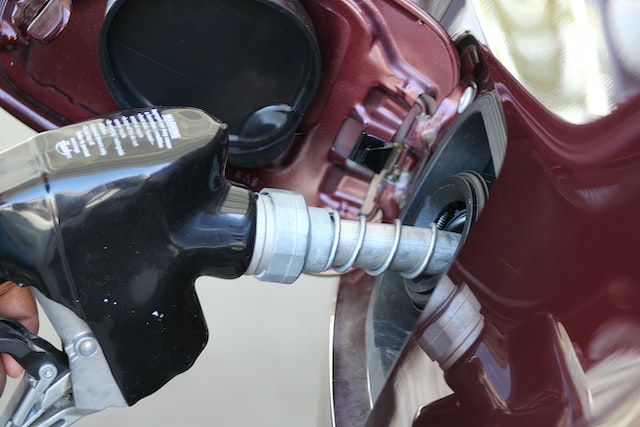Certain people that own snow blowers do not bother with draining the gas tank before long-term storage, even though this might lead to fuel system problems in the subsequent snow season.
You should avoid storing a gas powered snow blower over summer with fuel in its tank, for the reason that the ethanol in the fuel absorbs water from the air. The result is all kinds of sticky deposits in the fuel system that can clog up the carburetor. Therefore, use a fuel siphon pump to remove the fuel from the tank, then run the snow blower out of gas. You may use the drained fuel in a gas powered lawn mower, or even your vehicle, as long as it is not a two-stroke fuel mixture.
Can I store my snow blower with gas in it?
If the fuel in the tank contains ethanol, then you should definitely add a fuel stabilizer. This fuel additive prevents the ethanol from going bad inside the tank, and causing gum deposits in the carburetor. Study the information on the container of the fuel stabilizer to work out how much you need to add to the fuel in the gas tank. After adding the fuel additive, run the engine for about 10 minutes to distribute the treated fuel to the carburetor. Therefore, you may store a gas powered snow blower with fuel in it for a few weeks, as long as you add some fuel stabilizer. Do not forget to close the fuel shut-off valve.
How do you drain the gas from a snow blower?
If you want to store the snow blower for an extended period of time until the next winter, then adding a fuel stabilizer is not enough. You need to drain the fuel from the gas tank. The easiest way to remove the fuel from the gas tank of a snow blower is to buy and use a gas siphon pump. If you cannot find one, then a turkey baster might also work (just don’t use it again for the turkey).
Stick the gas siphon pump into the gas tank and pump out the fuel into a suitable container, being careful not to spill any fuel. Next, start and run the snow blower until the engine quits running. The gas tank should now be empty. Moreover, you might also drain fuel out of the carburetor by removing the drain bolt.
Should I run my snow blower dry before summer storage?
There are two reasons why you should run the snow blower until it stalls due to an empty fuel system. First, storing a snow blower with fuel in the tank in an indoor area where there might be a source of ignition is dangerous. Second, fuel will turn stale, and evaporate, and leave harmful deposits inside the gas tank when stored for a long period of time. This can damage the fuel system, or clog the carburetor. Therefore, it is recommended that you drain the gas tank and run the engine until it stops, before storing the snow blower away for the summer until the next winter.
How To Store Your Snow Blower Without Gas In The Tank
Wipe the dust from the operator manual of your snow blower, and read the section on storage. You might treat the fuel system for storage by adding a fuel stabilizer. Run the engine for a few minutes until the stabilized fuel reaches the carburetor.
It is probably better to store your snow blower with an empty gas tank. You can drain the unused gasoline from the tank with a fuel siphon pump before storing it for the next snow season. You can use an empty jerrycan for holding the drained fuel. It is easy to use a fuel siphon pump: you put one tube into the gas tank, the other tube into the jerrycan, and pump it out.
Finally, there might be some residual gas left in the rest of the fuel system. You can get rid of that by starting the snow blower and letting it run until it stalls. That should take care of almost all the fuel in the snow blower. You can now store your snow blower safely without any gas in the tank.
Conclusion
In the short run, you can treat the fuel in the gas tank with a fuel stabilizer. This prevents the formation of gum deposits that can clog or damage the components of the fuel system. However, storing a snow blower with gas in it for the whole summer might not be such a good idea. In that case, you can drain the gas tank and run the snow blower dry until it stops. For the most part, you can avoid fuel system problems by draining the fuel tank and running the snow blower out of gas before summer storage.
Photo by Dawn McDonald on Unsplash

